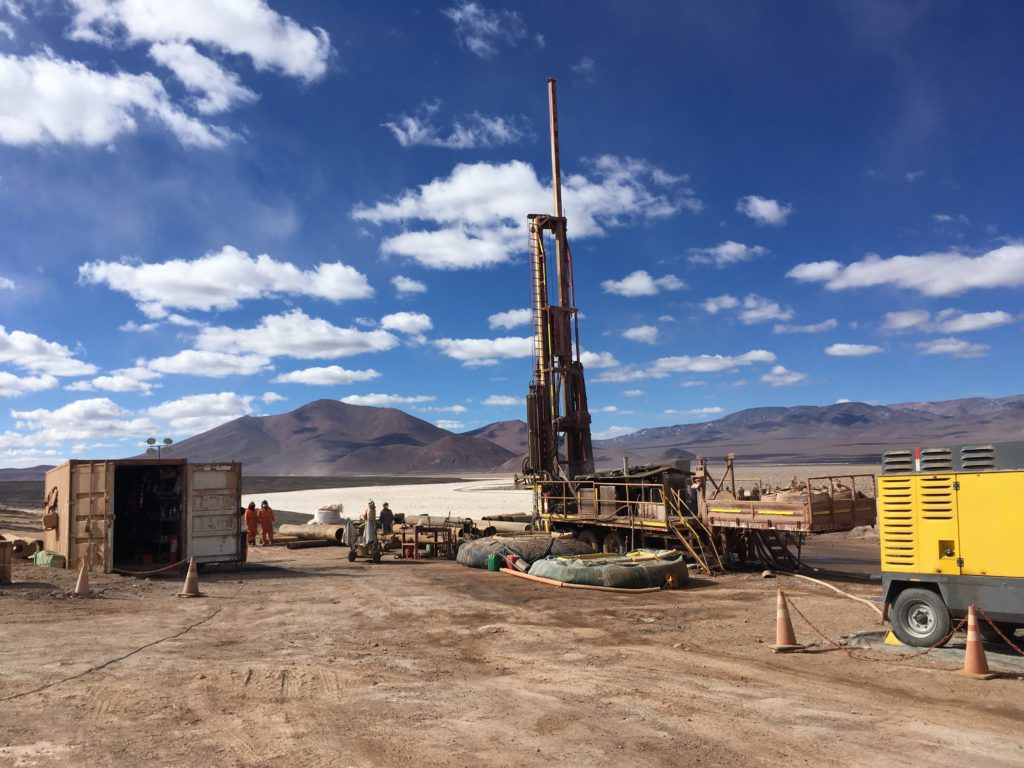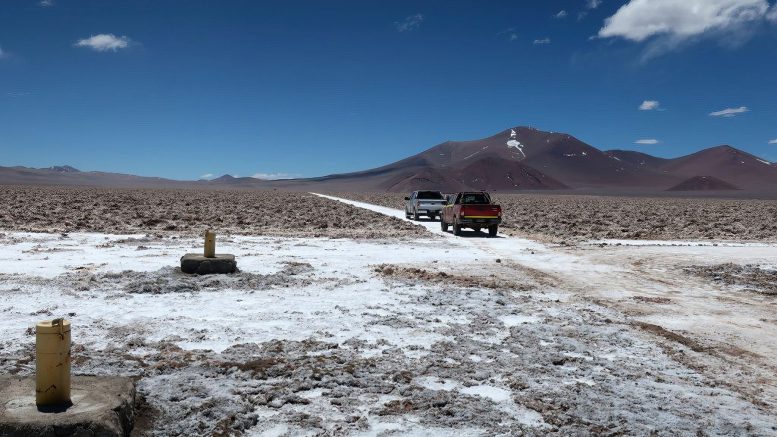Despite tight restrictions, an Australian junior is planning to begin construction of Chile’s first new lithium project in decades.
Home to the world’s largest lithium reserves, Chile’s exports of the mineral have soared in recent years as producers Albemarle (NYSE: ALB) and SQM (NYSE: SQM) have rushed to expand capacity to meet red-hot demand from the electric vehicles industry. Exports rose 47% to 220,000 tonnes last year as prices soared to record levels above US$50,000 a tonne while the value of its exports rose almost ninefold to US$8.6 billion.
But despite this massive expansion, many fear Chile could be missing the boat.
Having lost its position as the world’s top lithium exporter to Australia, it could soon be overtaken by neighbouring Argentina. Multinationals, including Rio Tinto (NYSE: RIO; LSE: RIO; ASX: RIO), Posco Corp., and Zijin Mining Group are set to invest billions of dollars over the next decade. With six projects already in construction, production could exceed 300,000 tonnes annually by 2028, up from just 28,000 tonnes in 2021, according to U.S. investment bank JP Morgan.
In contrast, according to the Chilean Copper Commission, a government agency, production in Chile is set to plateau at less than 240,000 tonnes by the middle of the decade.

A drill rig at Lithium Power International’s Blanco project in Chile. Credit: Lithium Power International
The problem is tight restrictions on production of the mineral. Albemarle and SQM both operate from state-owned claims over the Salar de Atacama, home to the world’s richest lithium reserves, but subject to production quotas and production royalties of up to 40%.
Chile has other salt-flats (although none as big and rich as Atacama) but Cold War-era controls reserving lithium production for the state have slowed exploration. So far, the government has awarded no contracts to private companies allowing them to produce lithium.
The situation is further complicated by growing claims from communities and the government over the country’s white gold.
When the government awarded contracts to produce lithium to two private firms — Chinese EV maker BYD and Chile’s Errazuriz Group — the tender was blocked in the courts by Indigenous communities who claimed that they not been properly consulted.
Meanwhile, new President Gabriel Boric, who took office last year, has promised to create a national lithium company to bolster production, strengthen government control of the industry and develop downstream industries such as manufacturing battery components.
The government has thus far not revealed what form the entity will take, other than that private investors will be able to participate. Details should come with the launch of its lithium policy which could happen in March, interim mining minister Willy Kracht said last month.
But now Australia-listed Lithium Power International (ASX: LPI) thinks it may see a way through the morass. Working from minerals claims on the Salar de Maricunga — Chile’s third largest — which predate the 1979 decree, the company is advancing its Blanco project that would produce around 20,000 tonnes annually of lithium carbonate over 15 years.
The project already has an environmental licence (confirmed by ministers early last year), necessary approval from the Chilean Nuclear Energy Commission to extract and sell lithium and the consent of Indigenous communities living nearby.
After buying out its Chilean and Canadian partners in the venture, LPI is now in talks with banks over financing with the aim of beginning construction by the end of the year. It could be in production as soon as mid-2026.
The project “will help Chile to maintain a strong position in the industry at a global level,” CEO Cristobal Garcia- Huidobro told The Northern Miner.
Unlike other private attempts, the company has the backing of local Indigenous communities and the Atacama regional government.
“They have done things well from the beginning… it should not have any problems being developed,” governor Miguel Vargas said in an interview.
But LPI is not the only firm eyeing the Maricunga’s riches.
Collision course
Simco, a joint venture between Errázuriz and Taiwan-based Simbalik, is advancing its own licenced project on the salar, while state mining company Codelco has begun exploring its own claims in the area. Critically, the copper giant was granted a government licence to extract lithium covering a large part of the Salar.
LPI has sought talks with Codelco over joint development of the Salar, signing a memorandum of understanding in 2018, but talks ended without agreement and the MoU has since expired.
“Unfortunately, they did not advance as we’d hoped,” says Garcia-Huidobro. So the company is going ahead on its own.
That could put them on a collision course with other actors.
Just a twentieth the size of the Salar de Atacama, some doubt whether the Salar de Maricunga can support several brine extraction operations.
“It is a salar which in my opinion should be developed by one player, not many more than that,” Codelco chairman Maximo Pacheco told reporters last month. The company has applied to extend its government licence to cover more of the salar.
“We have expressed our interest given that we have our CEOL and the procedures that we are pursuing.”
Fears are rising that the dispute over who has the right to the Maricunga’s lithium will head to the courts. Simco has already threatened to launch proceedings before the International Centre for Settlement of Investment Disputes if Codelco tries to block attempts to develop its project. LPI may face similar difficulties if it tries to go it alone with Blanco.
“If this becomes a legal battle, my fear is that it will be several years before Salar de Maricunga is developed,” says Cristian Quinzio, a mining lawyer.
By then, the bull cycle in lithium prices may have passed. Producers in Australia, Argentina and elsewhere are rushing to enter production as soon as possible, lithium recycling is expanding, while carmakers are seeking to lower raw material costs possibly by using alternatives.
“The opportunity for lithium is today — not in eight or ten years, which how is long it would take to develop and build a new project,” says Garcia-Huidobro.
Rather than a battle in the courts, a more promising path would be for the parties to reach agreement on how to best develop the Salar, perhaps with the government using its new lithium development strategy to facilitate a deal between the public and private sectors.
“We hope to continue advancing and working very closely with the Chilean state, whether that’s through Codelco, ENAMI or the vehicle that is defined,” Garcia-Huidobro says.


Be the first to comment on "Would-be lithium miners eye Chile’s Maricunga Salar"